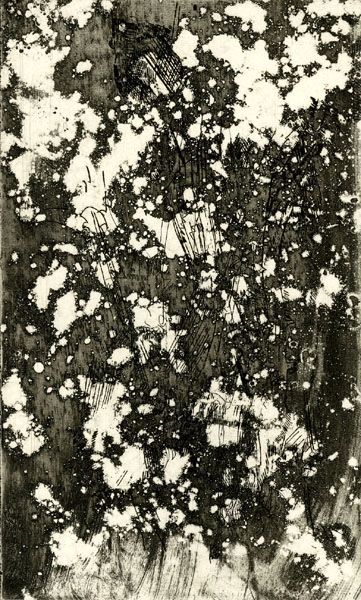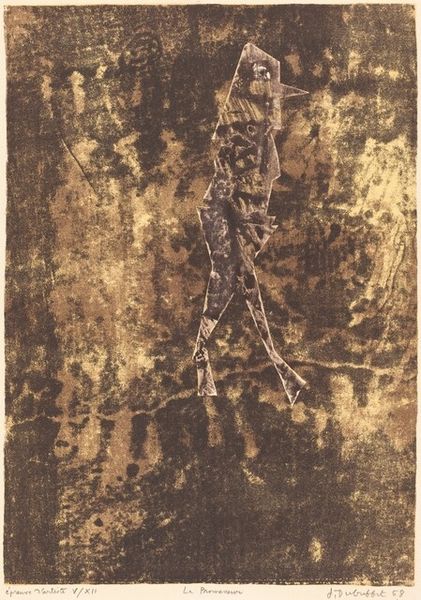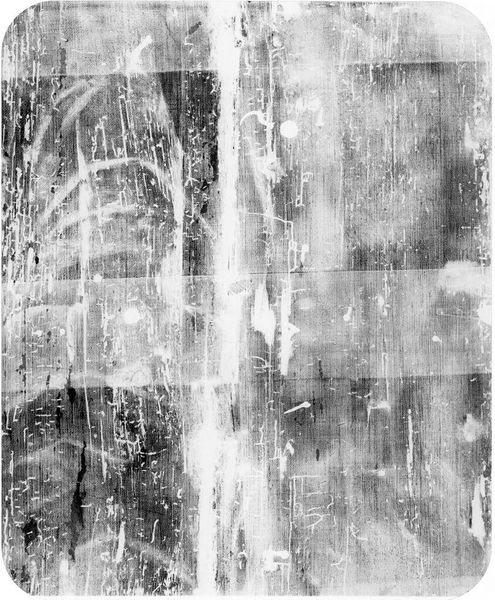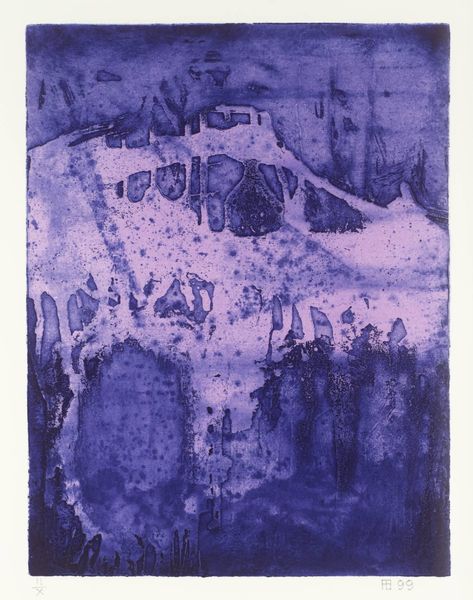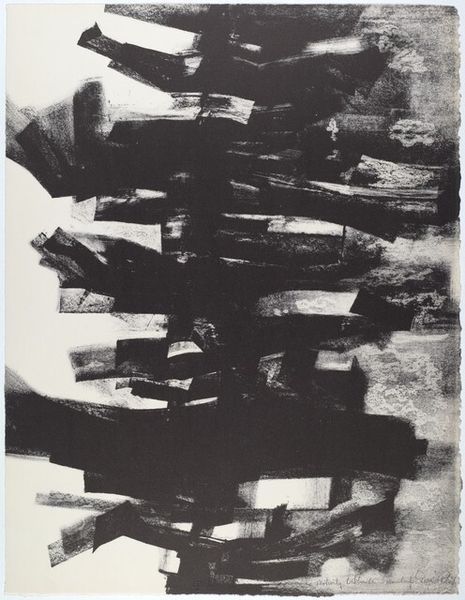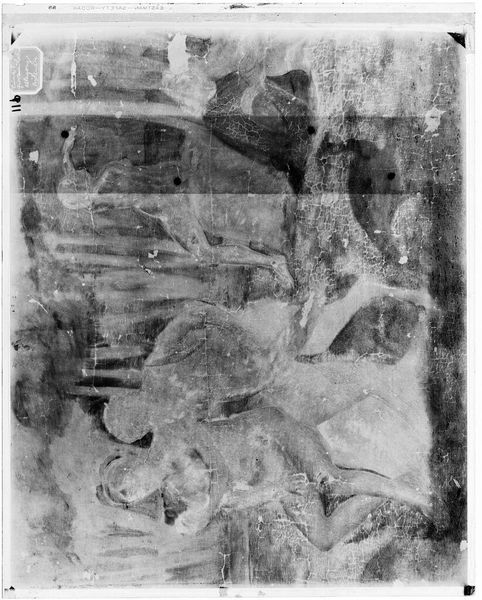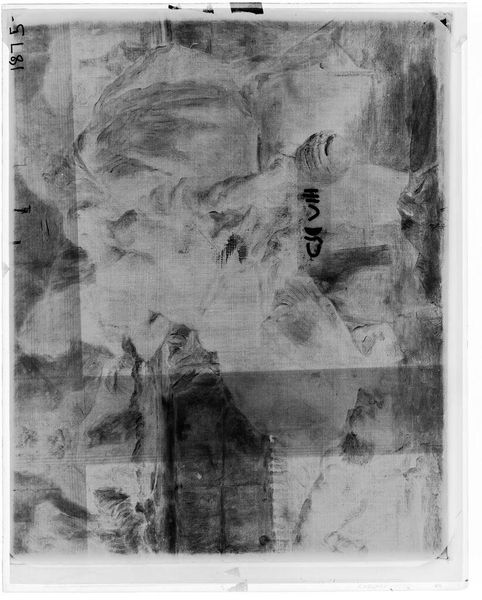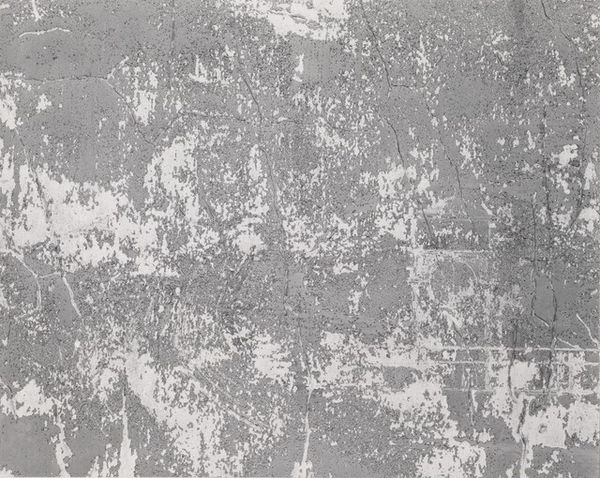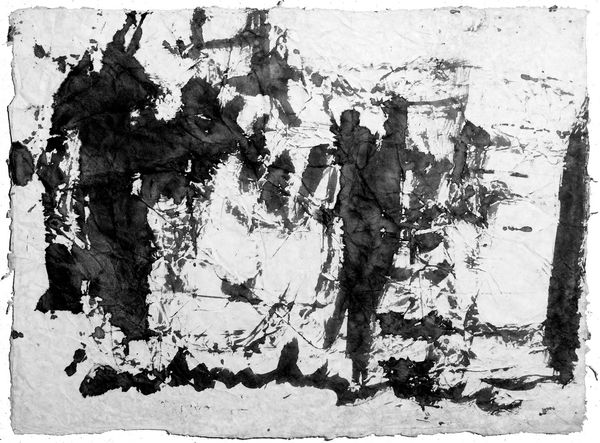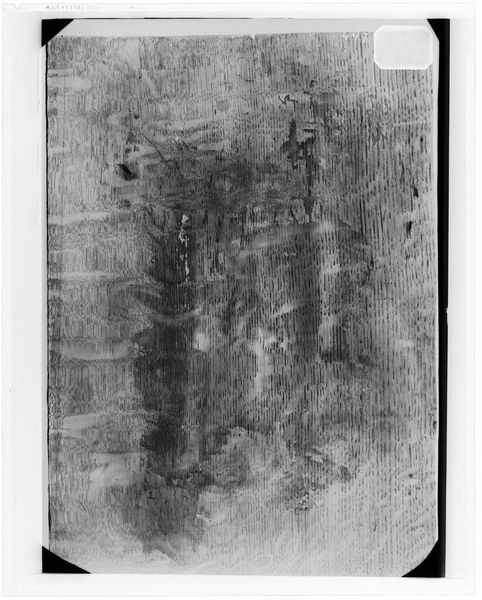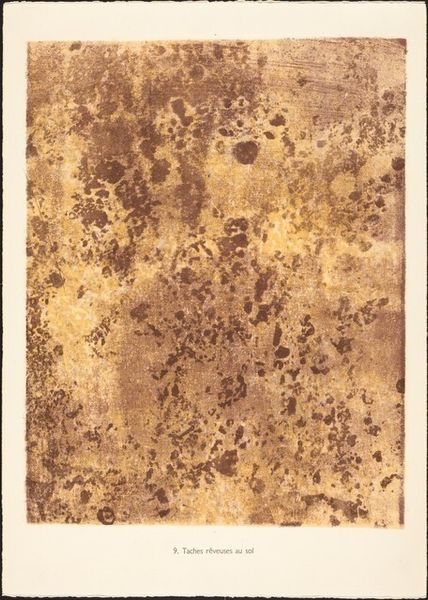
Copyright: 2012 Sam Francis Foundation, California / Artists Rights Society (ARS), NY
Curator: I find Sam Francis' "Untitled (from Papierski Portfolio) (SF 351)", created in 1992 using acrylic and stain on paper, incredibly calming. What are your first thoughts? Editor: My initial reaction is quite visceral. It feels like peering through a rain-streaked window, the world outside dissolved into hazy blues. There’s a somber yet serene quality about it. Curator: I appreciate that interpretation. Formally speaking, observe the layering of stains. The composition reveals Francis' dedication to the materiality of paint. See how the diluted acrylic bleeds into the paper, creating depth and texture? The 'empty' white space punctuates and activates the design, guiding the eye. Editor: Indeed. In terms of reception, abstract expressionism was greatly tied to American identity during the Cold War, touted as evidence of free expression in contrast to Soviet art. Francis, exhibiting internationally, was therefore a cultural ambassador, even if his work eluded direct political messaging. How much do you think the political environment affected its reception? Curator: Political context undeniably frames our interpretation, yet this particular piece seems to transcend such explicit readings. Focus instead on its exploration of chance. Notice the drips and splatters; the 'accident' becomes integral to the composition. The artist uses chance as a tool to discover new formal relationships, creating dynamic tension with carefully constructed geometry. Editor: While I acknowledge your insightful formal analysis, I can't help but consider the marketplace. This portfolio was produced late in Francis' career, suggesting a canny strategy to appeal to collectors through a controlled, reproducible image. Was it an attempt to democratize access to his work, or rather, to maximize its financial potential? Curator: A complex issue. His prints broadened his reach, bringing his aesthetic to a new audience. From a formalist point of view, it showcases Francis' engagement with pure abstraction and the act of art making. It becomes a record of action. Editor: From my view, considering its production within the context of his mature career, the politics of access and value become very apparent and undeniable, whether intended or not. Curator: A print it may be, the emotion of it feels like it captures a still moment and the joy of a rainy afternoon in that very unique time. Editor: Precisely; and, that unique time involved specific audiences, economies, and the ongoing narrative of abstract art. Viewing these nuances adds to its lasting resonance.
Comments
No comments
Be the first to comment and join the conversation on the ultimate creative platform.


